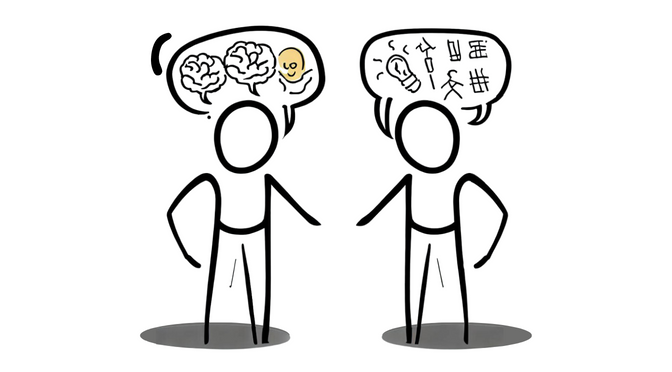Feedback is about both performance and perception. For constructive feedback to be received well, and to promote intended change, it helps to understand some things about how our brain works.
Our brain makes meaning of the world around us, help us decide the appropriate action for a given situation, and create learning to build a model for future action.
When giving feedback, it helps to be aware of how our brain works and to be mindful of the pitfalls that can sabotage our well-intended actions.
The Basis for Feedback
In the feedback process, we start by making observations of behavior, listening to the words we hear, or our belief about others. Our brain takes the information and makes meaning based on our internal models, beliefs, and values. This is an internal process that is not visible to others AND may not be in our awareness.
The Slippery Slope
When we give feedback that is not skilled, we will often talk about our conclusions (our story of what is happening) without discussing the input and the meaning we made. If we are unaware of this process, it is easy to believe that we are just talking about the ‘facts ‘when we each have a different reality and a different set of facts.
Sometimes we create similar stories of an event and we consider this agreement. If the stories are different, we have disagreement.
How to Avoid the Slippery Slope
Realizing that this process goes on in the background for each of us gives us the opportunity to interrupt the cascade of thoughts and actions.
It comes down to this:
“When I draw a conclusion based on ‘observed facts’, I need to own that. Acknowledging that my conclusion is a story I created, it is no longer fact … it is my story.”
So doing gives the opportunity to revise our stories to create alignment and a shared reality.
Example
Joe and Mary are in a meeting. Mary is the leader of the meeting. Mary observes that Joe is checking his mobile during the conversation and missed a question directed to him by another participant.
Mary’s Reality: “Joe, I am concerned about your commitment. I know that you have some feelings about me leading this effort and that you think you should be in charge here. You are not paying attention to what is being discussed and you are sabotaging our ability to get this important work done.”
Joe’s Reality:“Just before this meeting I had a call from my son’s school that he is ill and needs to go home. I called our after-school childcare provider to see if she can pick him up. I had not heard back from her before the meeting and was checking my mobile to see if this situation is resolved. I am committed to this work and think you are the right person to be leading the effort. I am disappointed that you think that I am not a team player.”
What could have been done to avoid the misunderstanding:
- Joe could have disclosed to Mary and the group that there was a situation needing his attention and he might be interrupted during the meeting.
- Mary could have spoken about the behavior she was seeing and asked Joe what might be going on or, alternatively, disclosed the story she was making from her observation.
Since Mary is the leader of the meeting and has some organizational power here, she now has a conflict to resolve with Joe. There might also be unintended impact on other meeting participants who observed the interaction and created their own story about the event. Mary may never know her impact on others and there could even be a negative impact on team performance.
Recommendations
- Avoid making a story about someone else’s intention or reasons based on their behavior. You are the expert in your world but not in the other’s world.
- Disclose your facts and the meaning you are making before deciding that what to you is an ‘obvious conclusion’ is indeed correct.
- Ask an open-ended question to find out what is happening for the other person.
- Take the initiative to disclose relevant information you are holding. That is, let your story out before someone else does it for you.
About this Post

- This original post was authored by IntelliVen Principal Dennis Werkmeister to help a leadership team he works with to improve their communication.
- If you want to learn more about how to communicate effectively as a leader, visit and subscribe to IntelliVen for more insights and resources.
About this Featured Image
- This post’s featured image was generated by Dall-e, a neural network developed by OpenAI. For more information, visit: https://openai.com/blog/dall-e/.
- The two stick-figures are giving feedback to each other, one with a brain showing internal models, beliefs, and values, and a thought bubble with an interpretation that is different from what the other stick-figure is saying or doing, with an expression of surprise, anger, or sadness, indicating a negative reaction to the feedback. See related images here.

